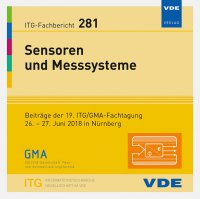Automatic Signal Recognition for Structural Acoustic Sensor Systems
Conference: Sensoren und Messsysteme - 19. ITG/GMA-Fachtagung
06/26/2018 - 06/27/2018 at Nürnberg, Deutschland
Proceedings: Sensoren und Messsysteme
Pages: 4Language: englishTyp: PDF
Personal VDE Members are entitled to a 10% discount on this title
Authors:
Harmstorf, Johann; Klemm, Rolf; Krieger, Karl-Ludwig (Institute of Electrodynamics and Microelectronics, University of Bremen, Germany)
Abstract:
This paper presents an automatic signal recognition system for structural acoustic sensors. Public machinery, especially those containing valuables, are a frequent target for the organized crime. The sensor system can automatically recognize the usage of several power tools, which are applied to a steel plate surface. The signals from these sound sources were found to have a temporal and spectral organization which can be employed for automatic statistical pattern recognition. This test is done in order to detect misusage, burglary and vandalism on surface areas of unsupervised vending machines. The system uses up to four thin Polyvinylidene fluoride transducers to record the structure-borne sound signals. The sensors are only operated passively and subsequently any damage brought to the surface can only be detected at this point in time. This paper focuses mainly on the signal preprocessing and feature extraction steps that are taken to build the statistics for the Hidden Markov Models. Due to the small dimensions of the monitored surfaces, the characteristics of the supervised environment usually decrease the recognition rate significantly through noise, early reflections and reverberation. In the automatic speech recognition various algorithms have been developed in order to enhance the signal quality and build models which are independent of transfer path. We will present some of the algorithms that have been adapted for this automatic signal recognition system. The digital preprocessing consists of a denoising, signal activity detection and cepstral mean normalization stage, to enhance the signals. The feature extraction is based on the short-time Fourier transformation, from which the linear cepstral coefficients are calculated. The feature vectors also contain the δ- and δ-δ coefficients, which help to further increase the recognition rates.


